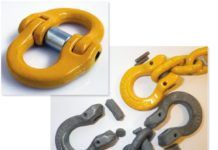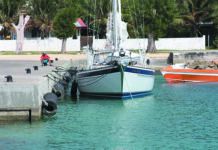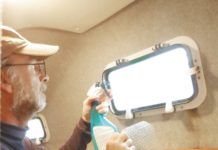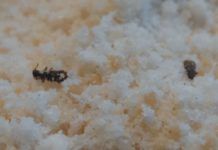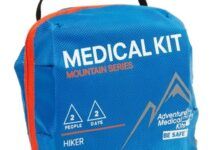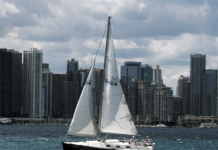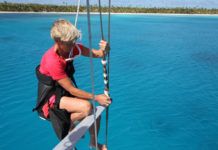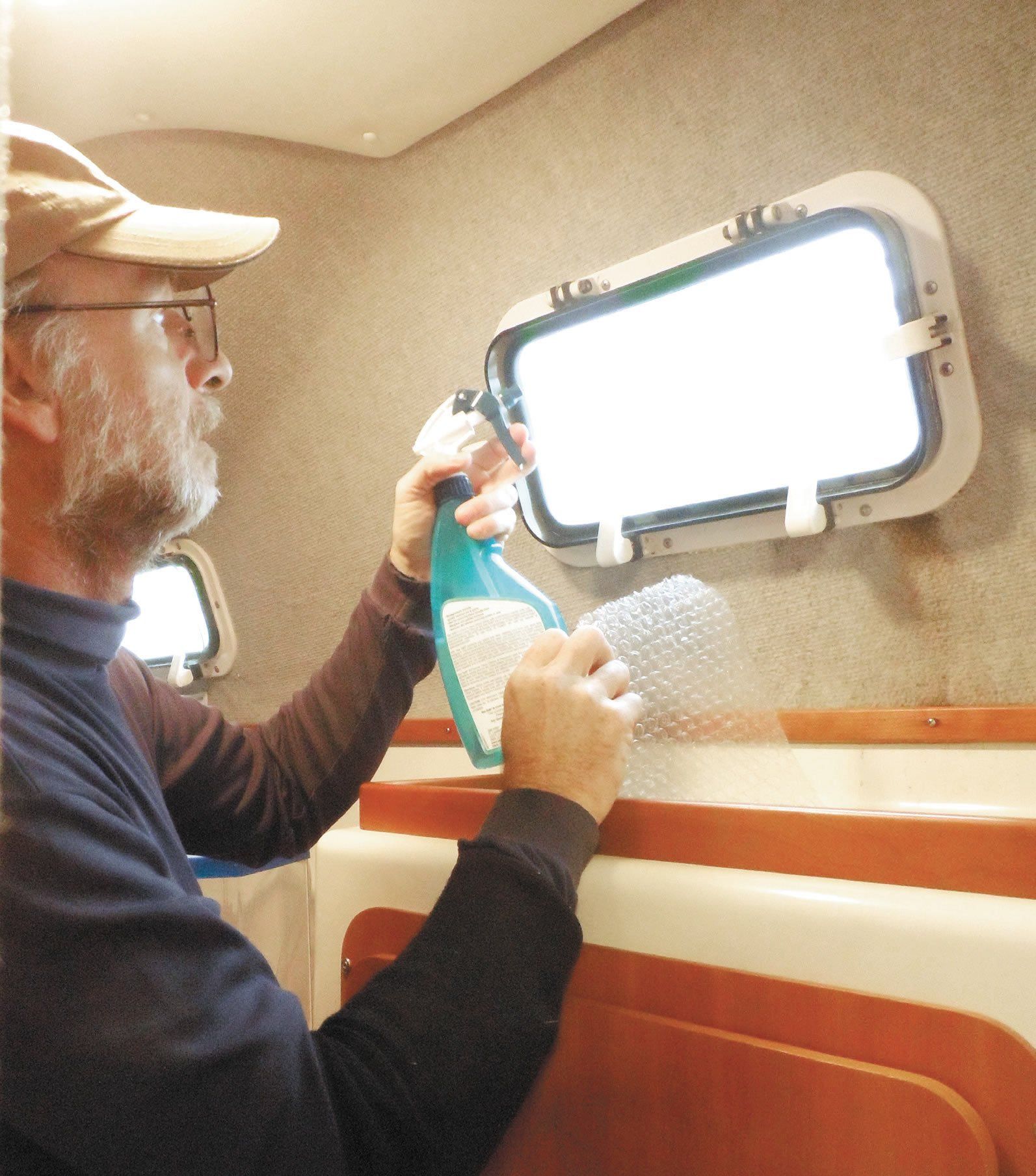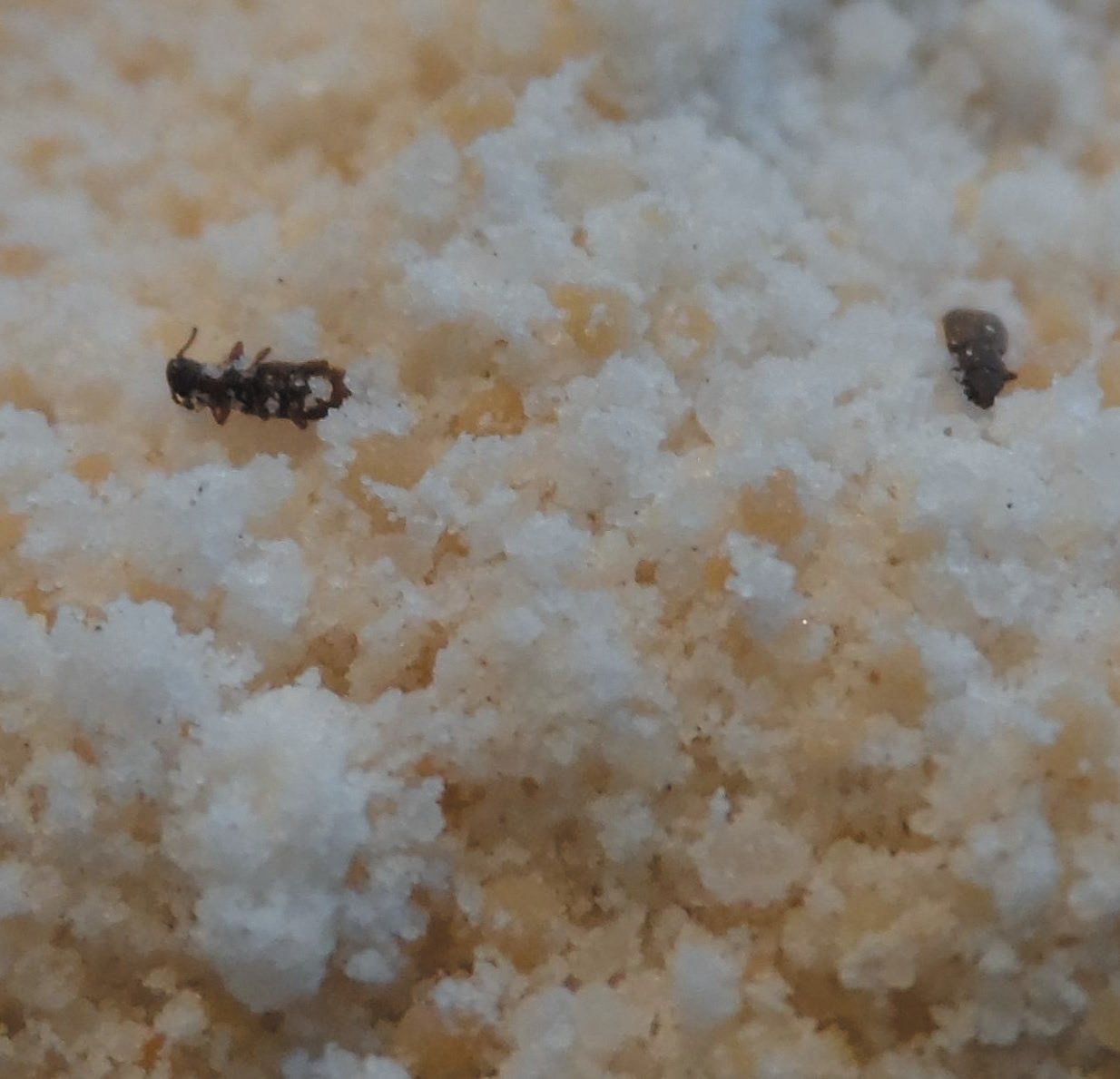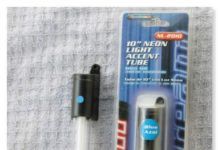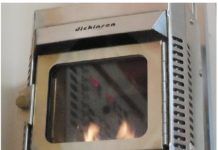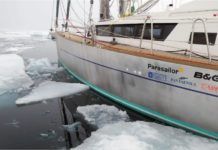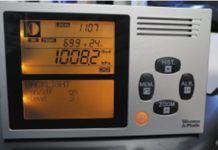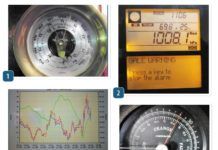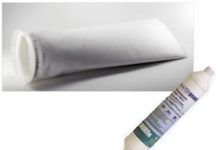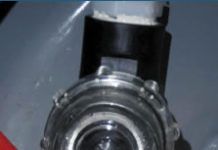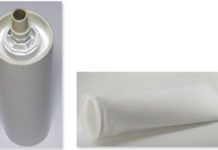Do-It-Yourself: Seeing Neon Blue
There are simply too many white lights in and around a municipal anchorage. A required white anchor light must have 360-degree visibility. But a white light at the tip of a mast can get lost in the stars or a background of city lights, making it a poor marker for a sailboat 60 feet below. Also, a light in the sky is not in the normal plane of view of other small vessels maneuvering in an anchorage. An additional white light on a stern arch is a better marker, but it also can become camouflaged by city lights onshore and will be obscured, by a small degree, by the mast. But Inland and International Rules state in part no other lights shall be exhibited, except such lights as cannot be mistaken for the lights specified in the Rules, which makes the growing use of LED flashing blue or white lights and non-flashing red, green, and pink lights illegal to use as anchor or on-deck lights. Such lights are easily confused for lighted buoys, channel markers, lighthouses, or police boats.
Do-It-Yourself: Salted Surfaces
While new finishes-paint, epoxy, or varnish-may be beautiful to look at, they are also as slick as can be when a little seawater hits the surface. You can cover your handiwork with nonskid tape; slather on a coat of bland nonskid paint; try one of the nonskid paint additives like crushed walnut shells (favored by PS Technical Editor Ralph Naranjo); or you can try an easy, age-old method that PS tester Drew Frye favors: salted varnish (or paint).
A Customized Way to Calculate Heating Needs
Although rules of thumb for heating requirements exist, every boat is different. A simple way to measure the heating requirements of a boat is to use a space heater and a few simple calculations. A typical electric space heater is 1,500 watts, or 5,150 British Thermal Units per hour output when set on high. Pick a cool day (does not need to be the coldest expected day) and observe how many watts it takes to warm the boat and how many watts are required to hold that temperature. Several hours should be allowed for this test (it takes time for the furnishings and hull liner to warm up), and it is best done at night when temperatures are cooler.
Fortune Favors the Cold and Wet
Two stories this month-installing an LPG fireplace and sealing portlights and hatches-had me pondering the challenges of a winter afloat. But what literally raised goosebumps were photos sent to us by Jimmy Cornell, whose popular cruising rallies and books have inspired countless dreams of sailing around the world.
Reading the Weather
The air surrounding us on the surface of the earth weighs about 1.2 kilos per cubic meter, and when we stack up these invisible building blocks of the atmosphere, they add up to tons of pressure pushing down upon us. Its little wonder that when air at the surface starts moving sideways, it has a profound effect on sails and the sea surface.
Barometers Usefulness Varies by Latitude
Many electronic barometer/barographs feature an auto alarm that warns of pending bad weather, and we found them to be accurate enough to heed. But whats most interesting is how an instrument that only tracks pressure and temperature can make such accurate calls. It all boils down to how rapidly atmospheric pressure is changing, and according to Alan Watts in his Weather Handbook (a longtime favorite among cruisers), a change of 3 millibars or more per hour is a reliable indicator that gale-force conditions are likely to be headed your way.
Water Tank Filters
You would think that with all the emphasis cruising sailors put on their boats and equipment, we would pay a little more attention to ensuring a clean and safe supply of water. This is less a concern in developed countries, where dockside water is safely treated or bottled water is affordable and readily available. However, once you begin to expand your horizons, ensuring a clean water supply requires more thought and effort. This is the first report in a three-part series on equipment and practices that no matter where you and your boat are, you can be reasonably sure that your on-board water supply is safe.
Types of Filter Media
Water filtration isn't rocket science, but some filter media is better suited for the marine environment than others. And, as we found in our test, some cartridge designs are better than others. Here are the most common types.
Filters for Water Tank Vents
Ever find a bug doing the backstroke in your water tank? We have. Would you leave a glass of water sitting uncovered for weeks and then come back to it? Of course not, but many builders either lead the hose to a mushroom-type through-hull fitting, or terminate it inside the cabin, with nothing to keep the ubiquitous critters from seeking shelter, fresh water, or a nesting site.
A DIY Water Filter
For those of you unfamiliar with Baja fuel filters, they are multi-layer strainers, purchased or handmade, used to filter diesel fuel of dubious pedigree before loading. Water, whether from a dockside hose or rainwater, presents a similar challenge. Weve been exploring freshwater filtration possibilities for a series of articles to come, and while there are great pre-filtration products out there, none offer the versatility of our own home-grown solution, which we call the Baja water filter.











